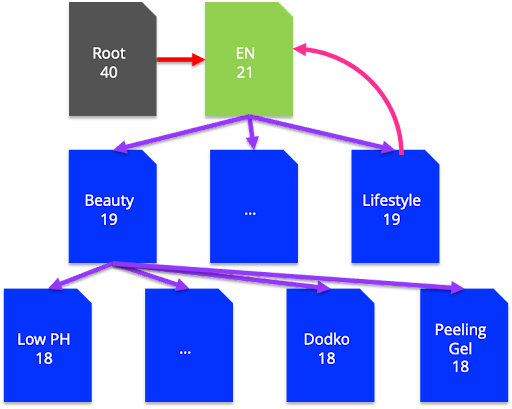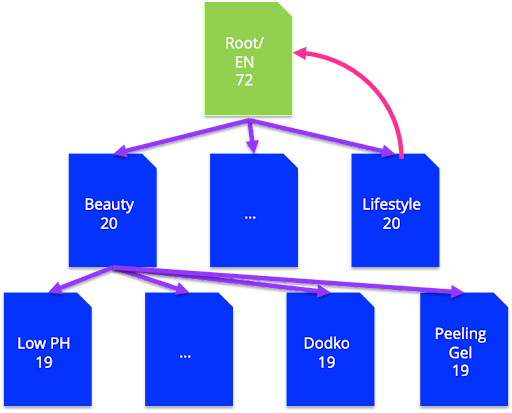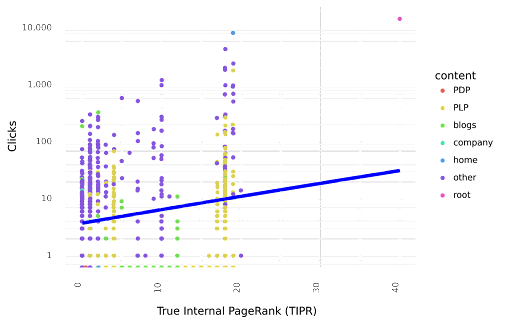Using Python To Explain Homepage Redirection To C-Suite

If you’re an SEO professional you might be working on a site that redirects the home page to a subdirectory, for example redirecting to a country specific version of the site. Or, using placeholder content linking to the main site’s home page in a subdirectory.
In both those cases you could be struggling to convince your client or colleagues to follow best practices. If so, then this article is for you.
I will show you a way to communicate to C-suite that makes sense to them technically and commercially by providing data-driven examples.
To do this, I will show you how to use Python to calculate the TIPR of all site pages to provide a comparative before-and-after scenario to justify your requested changes.
We will cover:
First of all, let’s discuss why the home page should be merged with the root.
Hosting Placeholder Pages On The Root and Root Redirects
Some sites host a placeholder page on the root URL or, worse, redirect the root to a subdirectory or page.
Many global brands, especially those in the fashion sector, will operate multi-regional sites where each regional store resides in their regional folder.
For example, if I went to Gucci, I’d expect to find the following stores:
…and so on.
In Gucci’s case, not only is there a regional folder, but there’s also a language folder, which is all very logical.
Because I reside in London, the root folder https://www.gucci.com/ redirects me to the UK store.
A site search for Gucci.com (site:gucci.com) shows that the root folder is indexed and offers a regional store selection menu.
For many sites, the root folder will permanently redirect to their default or most popular regional store.
Why The Home Page Should Be Merged With The Root
Search engines use authority (a measure of a page’s probability of being discovered via hyperlinks) to determine their relative importance on the web. Therefore, the more authority a page has, the higher its rank position potential in the search results (SERPs).
Given most sites accrue the most links to their root URL, this is where the search engine rank power resides.
This isn’t ideal for the site architecture, as it means that all the product listing pages (PLPs) and product description pages (PDPs) are an extra hop away from the home page.
This extra hop sounds small; however, it’s not inconsequential, as we’ll illustrate now and quantify later.
Let’s visualize the link graph of sites note setting their home page in the root folder.
Below is a real site where its root URL has a page-level authority score (according to Ahrefs) of 40 PR, redirecting to its main English language store /en (21 PR) before linking to all of the PLPs and PDPs.
 Image from author, April 2024
Image from author, April 2024Naturally, all of the pages (blue) via the logo will link to their regional store home page (for their users) and other regional home pages (shown in pink) instead of linking the root URL, which artificially inflates the value of the regional home page.
Note the site pages in site level 2 (which are directly linked from the home page) have a page level rating of 19 PR and the other pages in site level 3 have 18 PR.
What also happens is that the pages are one step removed from the root URL and thus don’t receive all of the authority.
Think of the deterioration of musical sound quality when making copies of a copy instead of a copy of the original music.
That’s the experience your site is offering to search engines when they’re trying to evaluate the relative importance of your site content!
If the stores linked to the root URL, this would be undesirable as it would create a load of redirects sitewide, further wasting the distribution of authority.
The best practice approach would be to cut out the middle man by merging the root with the home page so that all site pages are one less hop removed, as shown below:
 Image from author, April 2024
Image from author, April 2024Following the merge of the home page and the root URL, the home page PR is now 72, which is much closer to the site’s domain authority of 75 DR, and each of the pages got an additional 1 PR, increasing their potential to rank.
The Struggles Of Communicating The Benefits To Non-SEO Expert Leadership
To a non-SEO expert audience, such as your marketing and IT colleagues, this all sounds rather academic and abstract – and probably quite unbelievable.
Even if you used the diagrams above, they’re naturally more interested in the traffic impact, if not the revenue implications.
They probably have no idea of Google’s PageRank metric for measuring page authority and don’t care unless you provide the numbers.
Using Python To Estimate PageRank Uplift
Fortunately, with the power of data science, we can make those complex calculations in Python to estimate the new PR values following the best practice move to the root URL.
Take the PageRank formula:
PR(A) = (1-d) + d (PR(T1)/C(T1) + ... + PR(Tn)/C(Tn))
As explained in The Anatomy of a Large-Scale Hypertextual Web Search Engine by the founders of Google:
“We assume page A has pages T1…Tn which point to it (i.e., are citations). The parameter d is a damping factor which can be set between 0 and 1. We usually set d to 0.85. … Also C(A) is defined as the number of links going out of page A.
Note that the PageRanks form a probability distribution over web pages, so the sum of all web pages’ PageRanks will be one.”
The main gist of the formula is that the amount of PageRank a URL (A) has is mainly determined by the PageRank (PR Ti) of the pages linking to it (Ti) and the number of internal links on those pages C(Ti).
The Python version of the PageRank formula may be found here.
As a thought experiment armed with the knowledge of the above formula, we’d expect:
- The new home page to benefit from having all pages link to the root URL (PR Ti) shared along with the other outbound internal links C(Ti).
- All of the site pages to benefit from their more powerful parent URL (the new merged home page in the root URL).
With the above in mind, all we need to do now is recalculate the sitewide impact of merging the /en folder with the root URL on the whole site, which is done in several phases:
- Calculate TIPR of all site pages: As explained earlier in what data science can do for site architectures, while site auditing software gives the relative PageRank internally, this needs to be combined with the external PageRank from the internet using link intelligence tools like Ahrefs.
- Calculate the new TIPR of the new home page: i.e. /en merged or migrated with the root URL.
- Calculate the new TIPR of all subsequent and remaining pages on the website.
As shown in the diagrams above the new best practice configuration shows the new TIPR values of all pages.
Once the TIPR calculation steps are followed, your next job is to translate the technical benefits of SEO into the commercial impact to secure buy-in from your colleagues.
One outcome metric to model would be the organic search traffic as a function of TIPR. With sufficient data points (say 10,000), this can be achieved using machine learning (ML).
Your input would be the dataset prior to the TIPR recalculation where you’d feed the TIPR column and the search clicks (presumably joined on from Google Search Console).
The chart below visualizes the relationship between TIPR and clicks.
 Image from author, April 2024
Image from author, April 2024The blue line is an approximate model indicating how many more clicks a page would receive with an increase in unit PageRank.
Mathematicians are fond of saying, “All models are wrong but some are useful.” However, the science can be quite persuasive in providing some credibility to your forecasted uplifts using the Python predict() function using your ML model. You can find an example here.
In the above case, we see that up to 20 TIPR, there’s a 0.35 visits per month traffic uplift per page, and beyond 20 TIPR, it’s 0.75 visits.
Using A Data-Driven Approach Is More Persuasive To C-Suite
This might not sound like much. However, aggregated across the hundreds of thousands of indexable URLs, we forecasted an additional 200,000 in monthly traffic for one client.
This forecast gave them the confidence and willingness to finally follow through on the repeated recommendation of setting the home page to root, which the company received from numerous SEO consultants.
The difference is the quantification, both technically and commercially.
By combining TIPR and applying the PageRank formula to simulate a before-and-after scenario for your technical SEO recommendation – in this case, setting the root URL as the home page – your SEO is data-driven and, more importantly, much more persuasive.
Not only technically but also commercially, which will help you implement more of your SEO recommendations and, hopefully, promote your career.
That aside, taking a data-driven approach can also help you sense-check your best practice recommendations based on ideas you’ve read online.
It’s true today as it was 20 years ago: The best SEO pros constantly test ideas rather than unquestioningly follow best practice dogma.
More resources:
Featured Image: BestForBest/Shutterstock





